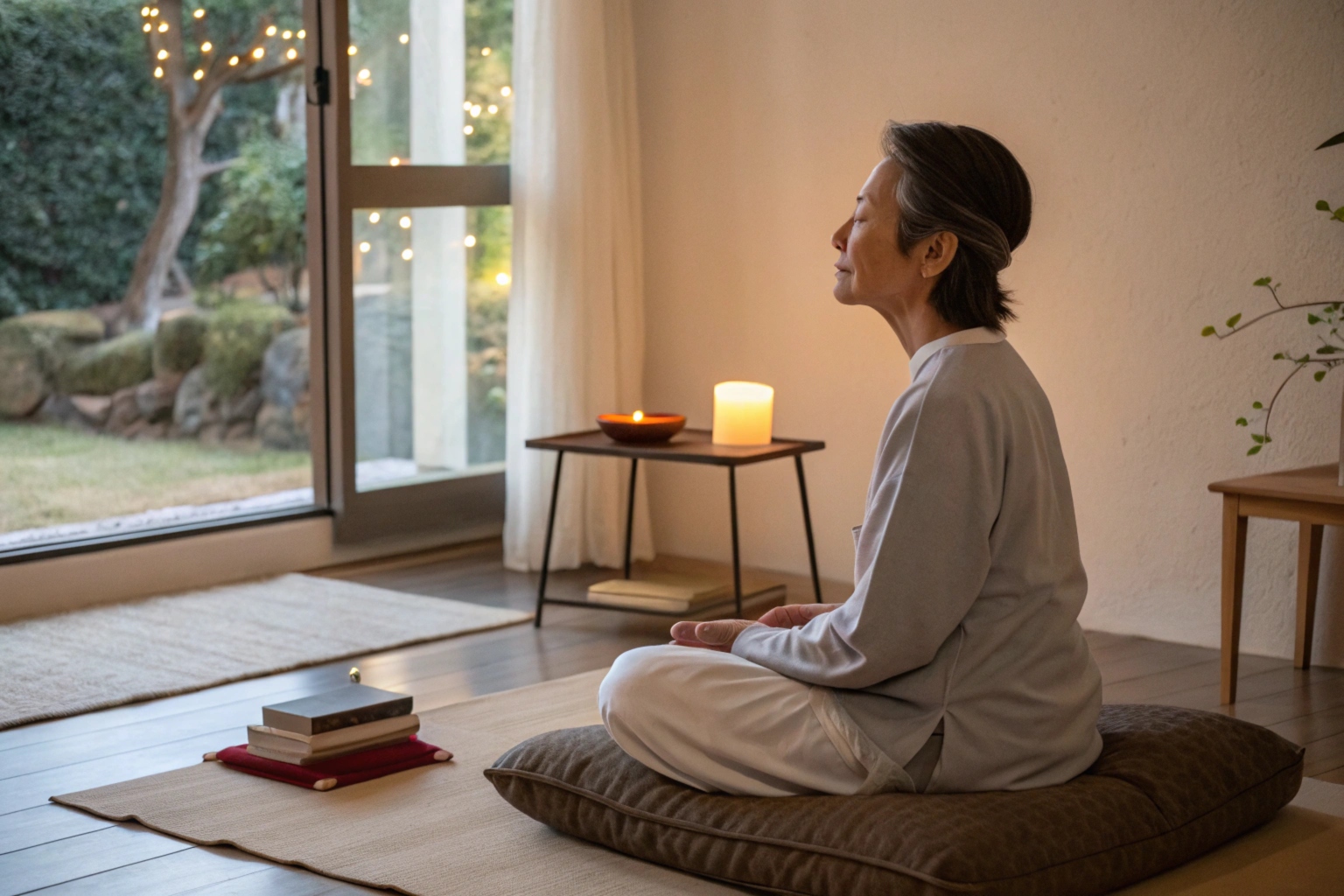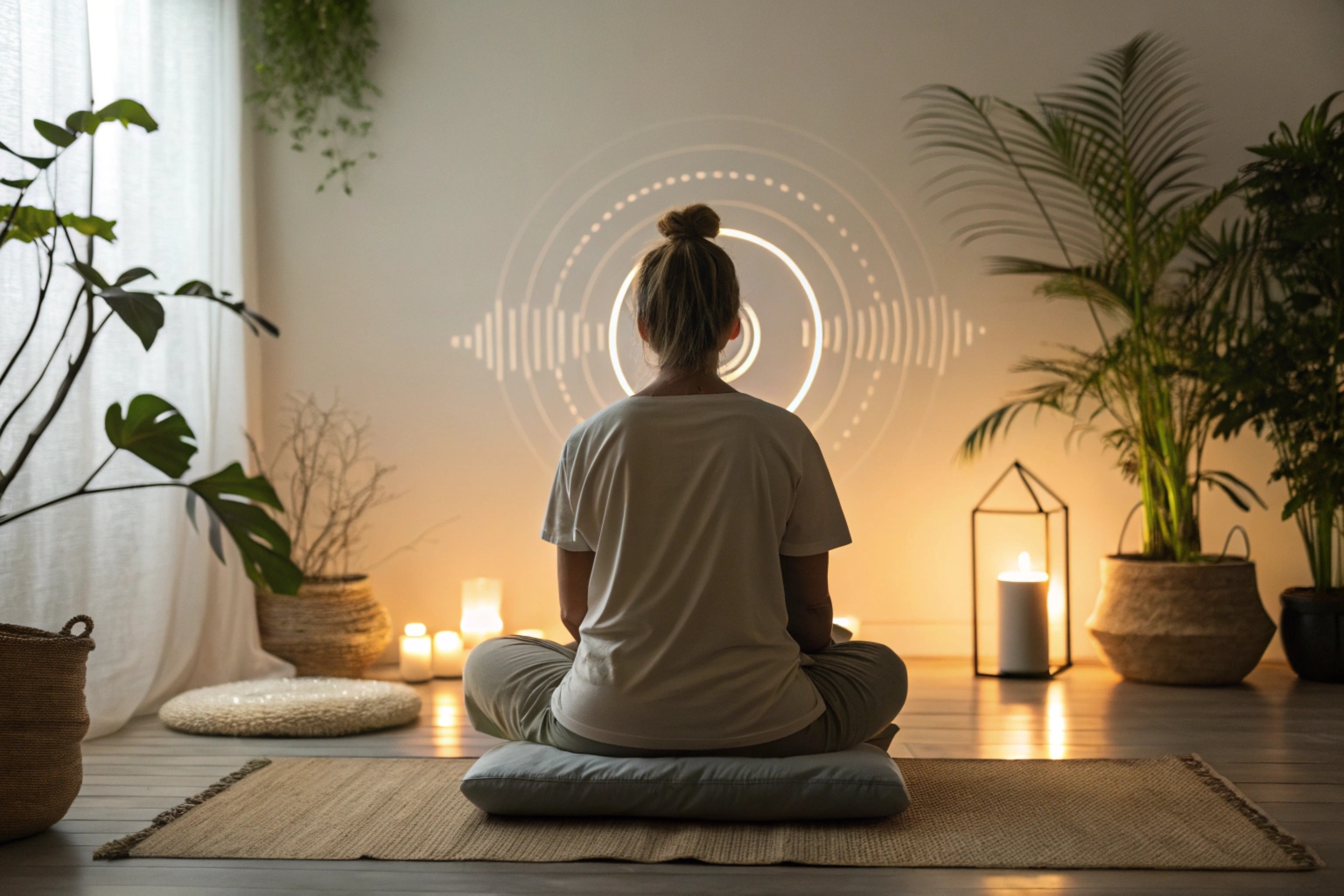How to Meditate for Beginners?

Meditation can be intimidating for beginners, but it doesn't have to be. If you're just starting out, it might feel difficult to quiet your mind or sit still for an extended period. But with consistent practice, anyone can unlock the transformative power of meditation.
So, how do you start meditating? It’s simpler than you think. Meditation doesn't require complex techniques or expensive equipment. All you need is a quiet space, patience, and an open mind. Starting small and building your practice gradually is the key.
Meditation offers numerous benefits—stress relief, improved concentration, and a deeper connection with your inner self. In this guide, we’ll break down the steps to start meditating and help you build a routine that fits your life.
How Do I Start Meditation for the First Time?

Starting meditation for the first time can be overwhelming, but it doesn't need to be complicated. The most important thing is to find a comfortable space and start with small steps. Here's how you can get started:
-
Choose a Quiet Place
Find a quiet spot where you won’t be disturbed. It could be a corner of your room, a park, or anywhere that feels peaceful. -
Set a Timer
If you're new to meditation, start with just 5-10 minutes. Use a timer to help you focus without checking the clock constantly. -
Sit Comfortably
You don't need to sit in a traditional lotus position. Sit in a way that feels comfortable for you. Whether it’s on a chair, cushion, or floor, make sure your back is straight. -
Focus on Your Breath
Close your eyes and pay attention to your breath. Inhale deeply through your nose, hold for a second, and exhale slowly. -
Let Go of Distractions
It’s normal for your mind to wander. When it happens, gently bring your focus back to your breath. Don’t judge yourself for losing focus.
It’s perfectly fine if you don’t feel “successful” after your first try. Meditation is a skill that takes time to develop, and with consistency, it will become more natural.
What to Think While Meditating?

Many beginners wonder, "What should I be thinking about while I meditate?" The answer is simple: you shouldn't be forcing thoughts or trying to achieve anything. Meditation is about observing your thoughts, not controlling them.
When you meditate, focus on your breath or a calming sound, such as a mantra. You don't need to clear your mind completely. Let your thoughts come and go without attachment. Your goal is to cultivate awareness and presence in the moment.
Focus on Your Breath
When your mind begins to wander, gently bring your attention back to your breath. Feel the sensation of air entering and leaving your body. This keeps you grounded in the present moment.
mindfulness breathing1
Observe Your Thoughts
Let your thoughts arise naturally without judgment. If you're thinking about work or your to-do list, simply acknowledge the thought and let it pass.
non-judgmental awareness2
Use a Mantra
If you find it helpful, use a simple mantra like "peace" or "calm." Repeat it softly in your mind to help maintain your focus.
mantras in meditation3
Focus on Body Sensations
You can also focus on the sensations in your body. This could be the feeling of your feet on the ground, your hands resting on your lap, or the warmth of your breath.
body awareness in meditation4
Letting Go of Judgment
The key is to observe your thoughts and body without judgment. Let go of any expectations and be kind to yourself. Every meditation session is different, and that's okay.
letting go of judgment in meditation5
What is the Proper Way to Meditate?

There’s no one "proper" way to meditate. The right technique for you depends on your preferences and what you're trying to achieve. However, there are some basic principles that apply to all types of meditation:
-
Find a Comfortable Position
While you don't have to sit cross-legged on the floor, it's important to be comfortable. Sitting with your back straight helps keep your energy flowing and your mind alert. -
Focus on Your Breath
Whether you're practicing mindfulness, loving-kindness, or any other technique, your breath is always your anchor. The rhythm of your breath can help keep your mind calm. -
Create a Regular Practice
Consistency is key. It’s more important to meditate regularly, even if it's just for a few minutes each day, than to meditate for long periods once in a while. -
Be Gentle with Your Mind
Your thoughts will wander, and that’s completely natural. When it happens, simply notice and bring your attention back to your breath or mantra. Be patient and compassionate with yourself.
What Are the Five Basic Steps to Meditate?

To make meditation simple, here are the five basic steps you should follow:
Step 1: Find Your Space
Choose a quiet, comfortable place where you can sit undisturbed. This could be anywhere you feel at ease.
Step 2: Sit Comfortably
Sit with your back straight, either on a cushion or a chair. Keep your body relaxed but alert.
Step 3: Focus on Your Breath
Take a few deep breaths to settle into the present moment. Then, simply focus on the natural rhythm of your breath. Inhale through your nose, exhale through your mouth.
Step 4: Let Thoughts Come and Go
When your mind starts to wander (and it will), just notice the thought and let it pass without judgment. Return your focus to your breath or mantra.
Step 5: End Slowly
After your meditation time is over, don’t rush to get up. Take a moment to reflect on how you feel and ease yourself back into your day.
Conclusion
Meditation is a simple yet powerful practice. By following these basic steps and being consistent, you’ll soon start to experience its benefits. Start small, stay patient, and allow yourself to grow with the practice. With time, meditation will become an effortless part of your daily life.
-
Reason for clicking: Explains how mindful breathing can enhance focus and reduce stress during meditation. ↩
-
Reason for clicking: Offers insights into how non-judgmental awareness improves mental clarity and emotional regulation. ↩
-
Reason for clicking: Explains how mantras help deepen concentration and calm the mind. ↩
-
Reason for clicking: Highlights the connection between body awareness and mindfulness during meditation. ↩
-
Reason for clicking: Provides techniques for cultivating acceptance and self-compassion in meditation practice. ↩







